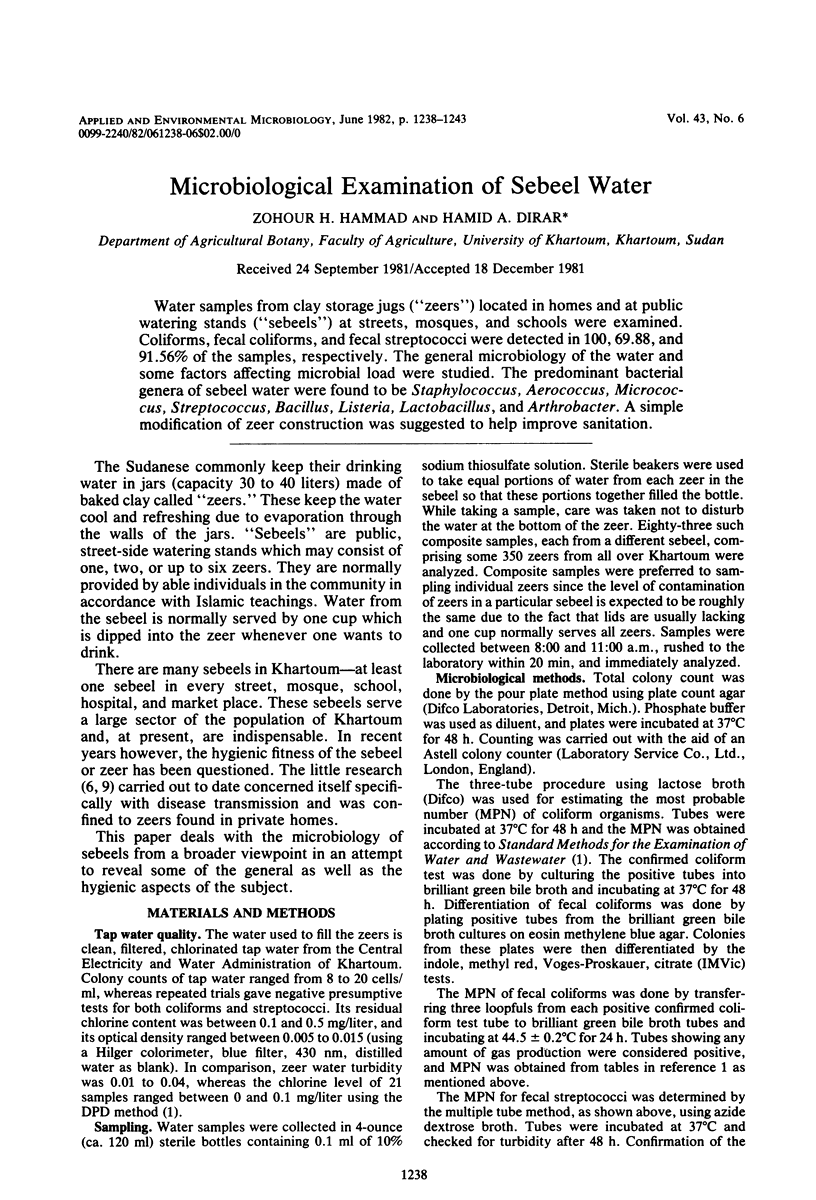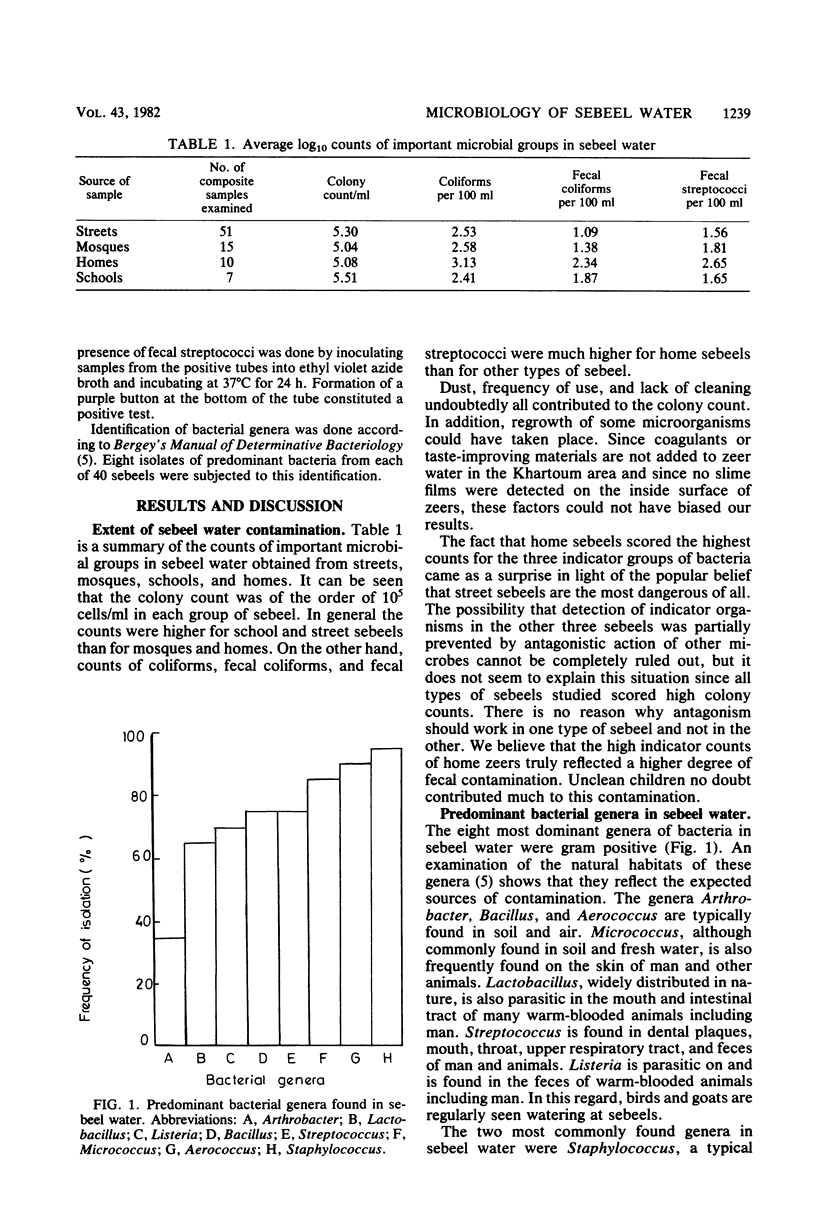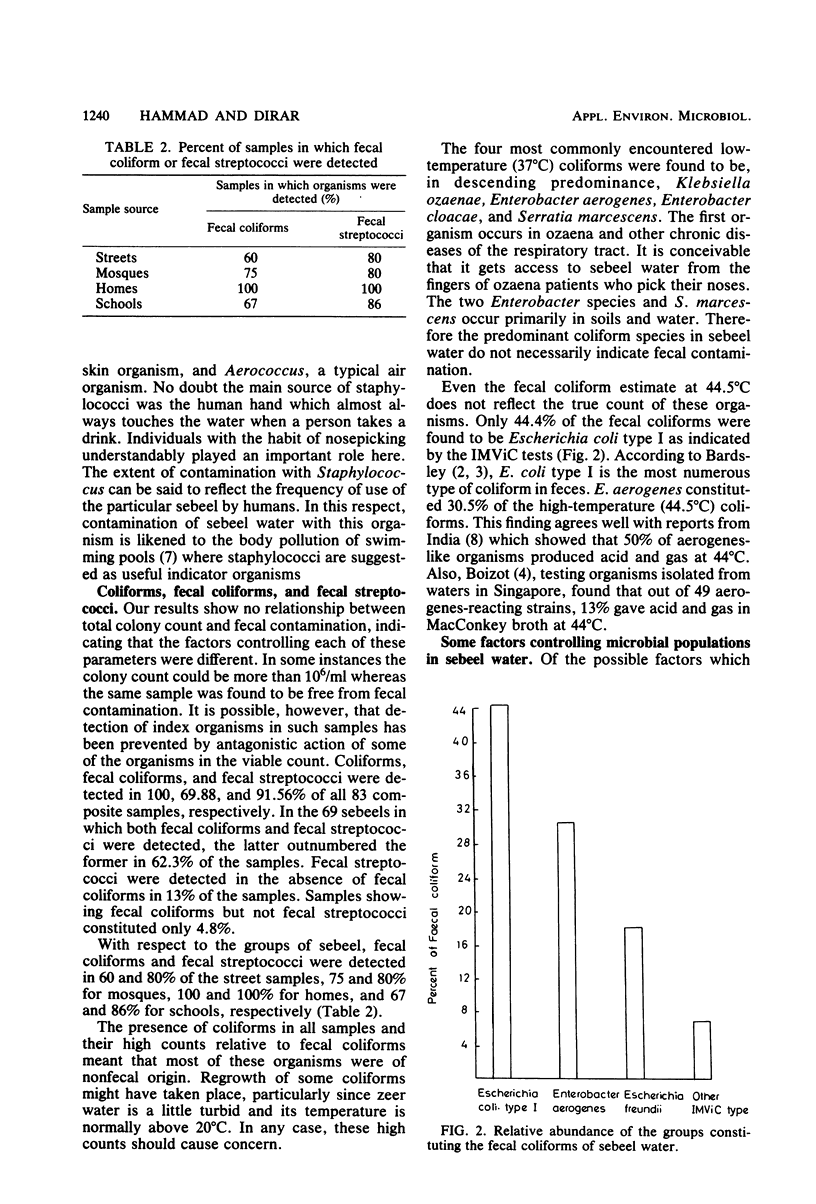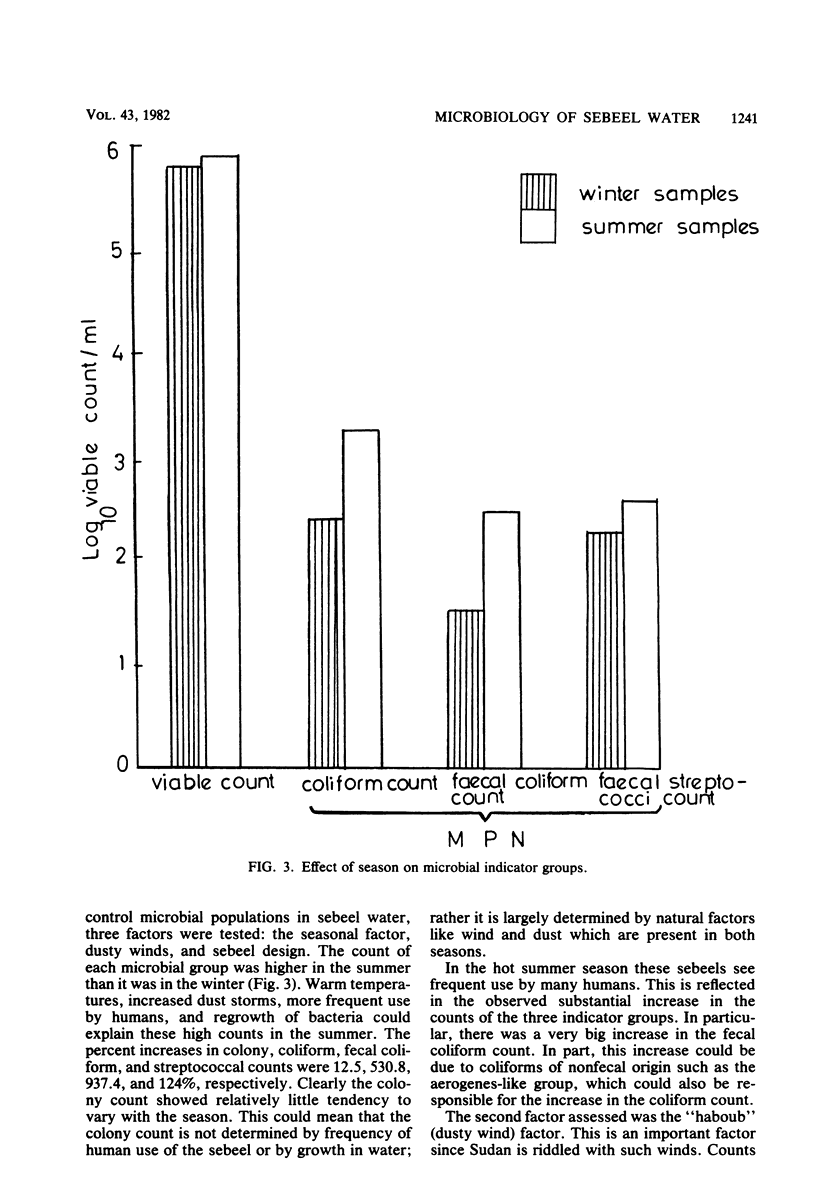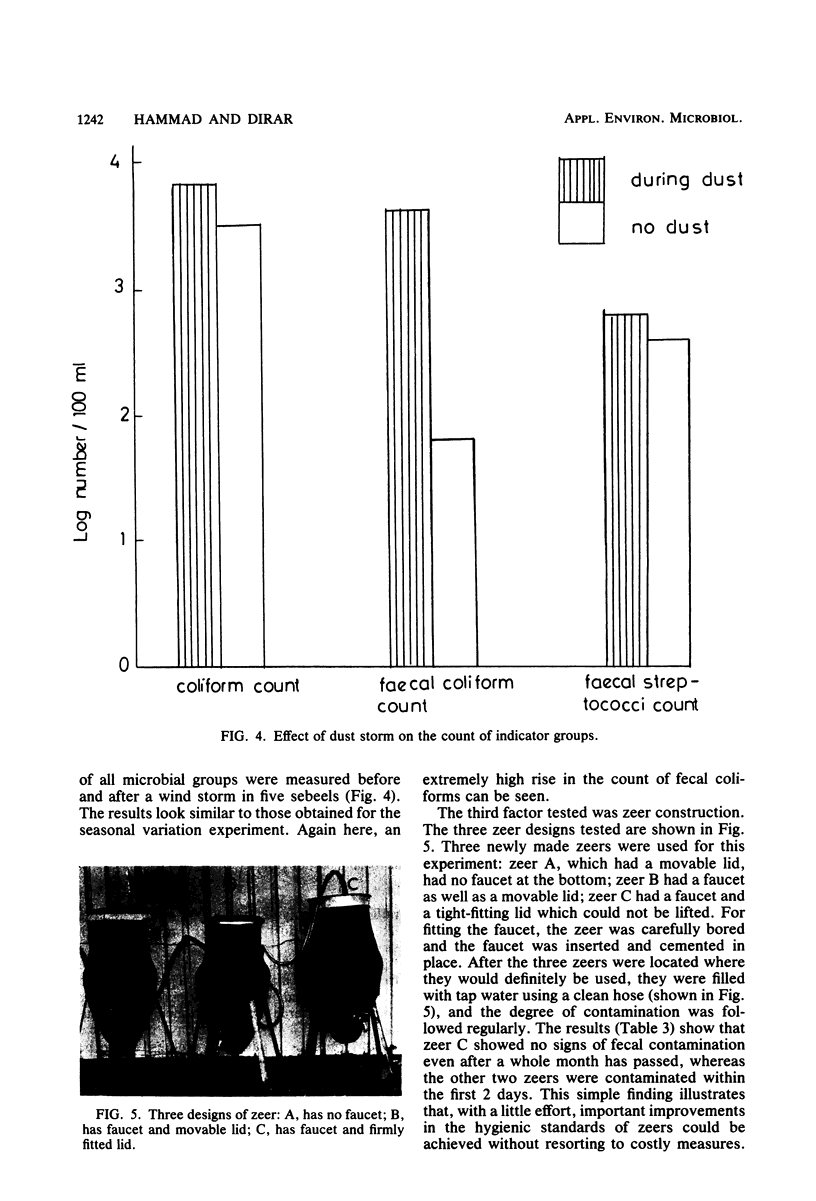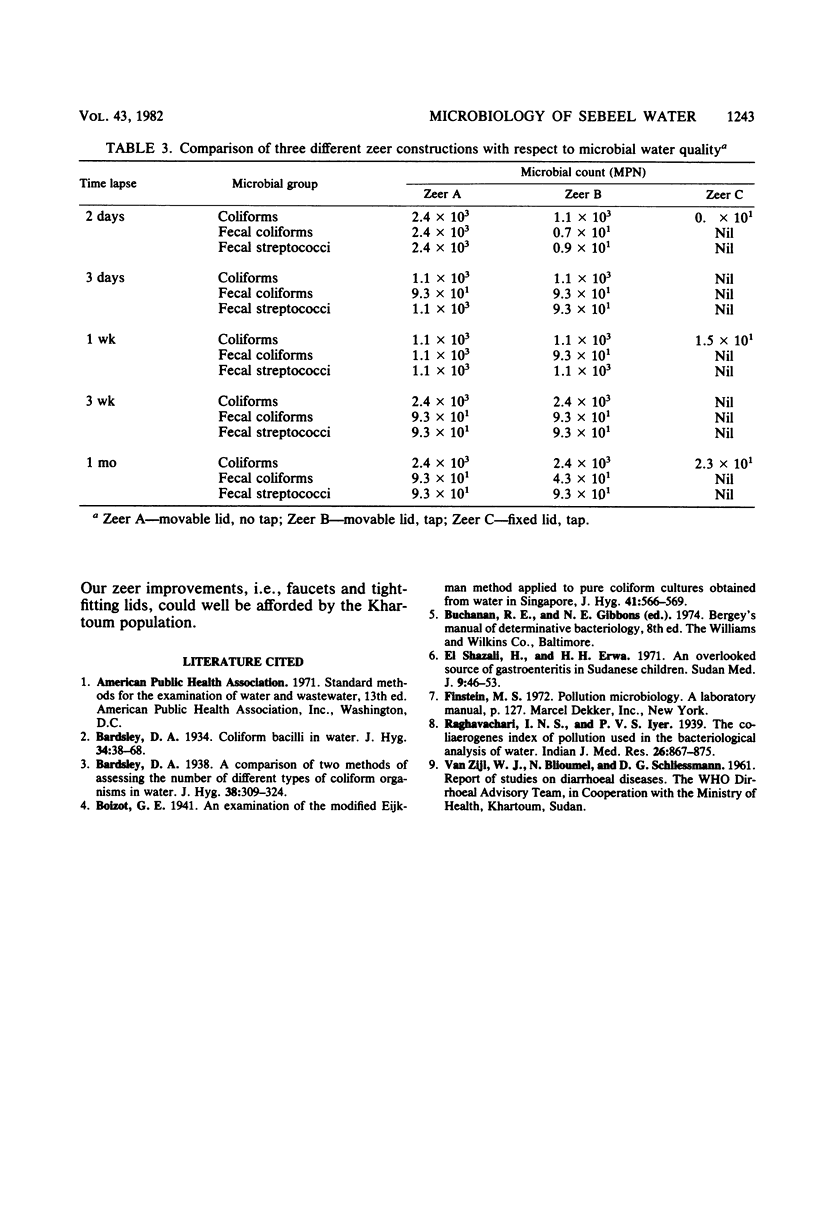Abstract
Water samples from clay storage jugs ("zeers") located in homes and at public watering stands ("sebeels") at streets, mosques, and schools were examined. Coliforms, fecal coliforms, and fecal streptococci were detected in 100, 69, 88, and 91.56% of the samples, respectively. The general microbiology of the water and some factors affecting microbial load were studied. The predominant bacterial genera of sebeel water were found to be Staphylococcus. Aerococcus, Micrococcus, Streptococcus, Bacillus, Listeria, Lactobacillus, and Arthrobacter. A simple modification of zeer construction was suggested to help improve sanitation.
Full text
PDF